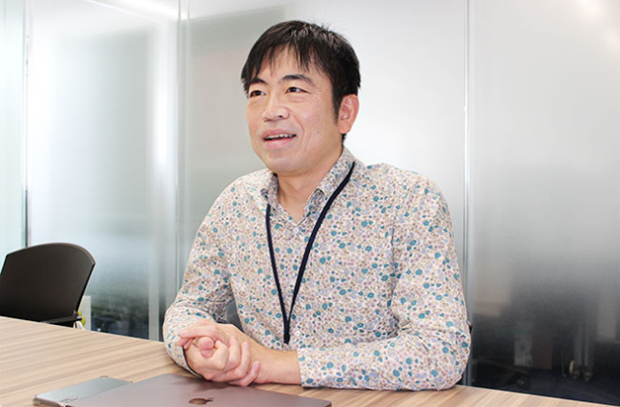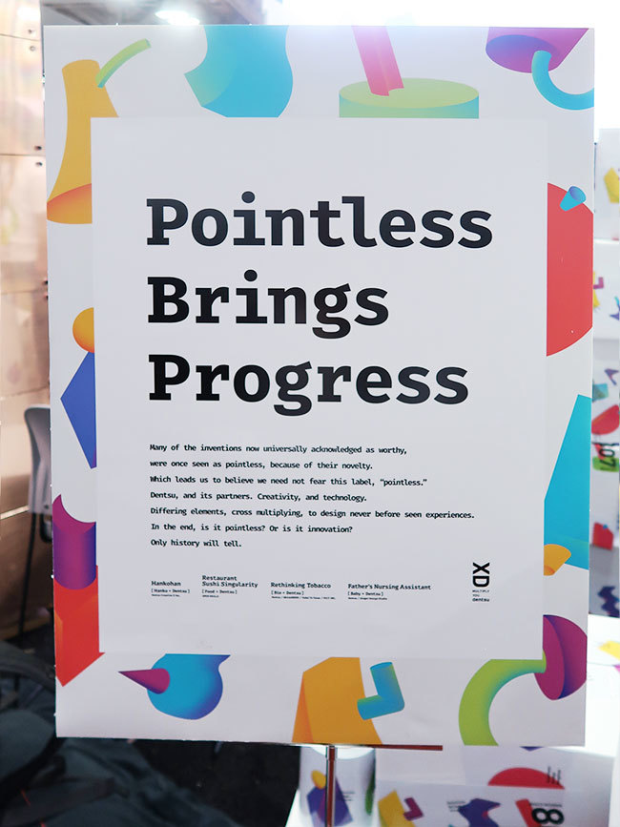
Dentsu's Projects at SXSW 2019 Present Creative Ideas That Go beyond Data

Held in the spring of each year in the United States, South by Southwest is a conglomerate of music, film, interactive media festivals and conferences. Large numbers of companies and creatives from around the world participate in the events, talk sessions, and exhibit products and works that offer a glimpse of the future. New technologies and business ideas are showcased at the SXSW Interactive Festival, which is well known for drawing attention to newly launched services — including some that went on to become global successes, like Twitter and Airbnb. At this year’s festival as well, all kinds of new business seeds were put on display.
Dentsu participated in the festival’s trade show this year, exhibiting four different projects. In this series of articles, Dentsu shines a spotlight on the creatives who oversaw the development and production of each project.
First to kick off the series, Dentsu spoke with the person responsible for overseeing it's exhibit at SXSW Interactive, Yasuharu Sasaki (above), an executive creative director at Dentsu’s Creative Planning Division 4. Dentsu asked him about the overall concept of the exhibit and its significance.
Seemingly pointless things can bring about innovations in the future
Q> To begin with, please tell us about the concept behind this year’s exhibit.
Yasuharu Sasaki> We called our exhibit 'Pointless Brings Progress,' based on the concept that things having no obvious worth may actually have a future. In other words, a thing or an idea that is extremely novel may seem meaningless at first—but precisely for that reason, it may spark innovations down the road.

Historically, there have been countless inventions like that. Ideas that paved the way for a new future were probably beyond the bounds of conventional thinking at the time. For that reason, I wanted to showcase some projects and the ideas of their creators that could have such possibilities, even though the ideas may be difficult to appraise at the present time.
The approach behind this concept is the antithesis of “efficiency.” With advancements in digital technologies, the mainstream approach today - particularly in the advertising industry - is to divide things up into targets and create representations for the purpose of getting results. That is an excellent method, and for raising the quality of advertising, it works very well.
On the other hand, if we think with a long-term outlook and try to envision the future, will such efficient methods lead to innovations that dramatically change the future or to ideas that transform society? That seems rather doubtful. Instead, such methods would probably generate representations and ideas within the scope of the data being processed. With that in mind, I thought that alongside this efficiency-oriented approach, its opposite approach should also be present, because having both is beneficial.
Things that people assumed to be useless can actually bring about big changes, and if such things become available, they can become more popular than people imagine. Creative ideas have that kind of power. For that reason, I wanted to test out such ideas at SXSW. That is the concept behind our exhibit.
The items we displayed were produced collaboratively by Dentsu’s Digital Creative Center, which is an internal interdivisional organisation, along with an in-house team of volunteers and members of Dentsu Creative X. We also participated last year, so this was our second time to exhibit at SXSW. We wanted to exhibit again this year because there are not many opportunities to showcase futuristic and visionary ideas. Creatives come up with great ideas as they go about their everyday work, but they do not have so many opportunities to present those ideas to a lot of other people. SXSW is an excellent venue for doing that, so I thought it would be very motivating for our creatives.
Four visionary projects put on display as SXSW shifts its focus
Q> In connection with the concept of the exhibit, why did you select those four projects in particular?
Yasuharu> Advanced technologies were applied in all of the projects, but instead of focusing on those technologies, I wanted to show how the projects depict the future and society through the application of the technologies, and to highlight the broad vision guiding the technologies as well as the seeds of the ideas.
Furthermore, SXSW was previously well known as a technology festival for premiering the latest innovations, but it has been going through a different phase over the last few years. Instead of showcasing new technologies and getting feedback from visitors, SXSW has been providing a venue for questioning and envisioning what will happen to the future and society if such technologies become widely used.
Times have changed. There is a growing distrust of digital technologies, and even the sponsors of SXSW picked up on that trend at the events. New technologies are no longer rare; we are saturated with them. For that reason, the issue now is how such technologies and people will co-exist. People are wondering how society will evolve when technologies like artificial intelligence and self-driving vehicles become widespread. Now we are in the process of exploring and clarifying those ideas.
In that context, rather than focusing on the technologies themselves, we exhibited projects that envision the future and reflect the society that is emerging.
Details about the four projects will be described by each lead creative in this series of articles, but I will briefly mention them here. Sushi Singularity is a project that involves digitising food and sharing the data. That will allow people to design personalised sushi that can be replicated anywhere in the world with specialided equipment. Innovations like that will completely change our notions about food.
This project was also exhibited last year, but I felt it would be good to show how this “seed” has been developing since then. I thought that people would better understand the depth of the concept if we continued to show how the vision is being refined.
The other three projects were exhibited for the first time, and each presented a vision of the future. The Father’s Nursing Assistant is an innovative device that allows a father to nurse and lull his child to sleep. It not only provides a technical solution for issues related to gender and diversity, but could contribute to discussions about effective parenting.
Rethinking Tobacco is a project that supports agricultural development through a new biotechnology, offering a potential solution to food crises. The technology itself is owned by a venture company, but Dentsu joined this project in order to effectively promote it. Finally, Hankohan offers a new form of communication using personal hanko seals, a traditional Japanese way of signing documents.
An excellent venue for cultivating the ability to tell stories
Q> How did people respond to the exhibit?
Yasuharu> All of the items on display were very positively received, which was really gratifying. The visitors enthusiastically expressed their opinions, and since they spoke to us very directly and frankly, we learned a great deal.

In the future, as the projects continue to move forward, it would be great if more people want to get directly involved. Representations and techniques that consistently get results are important, of course, but I think a creative’s ultimate mission is to produce really momentous results through groundbreaking ideas that no one had ever thought of before. With that in mind, I hope to keep using SXSW as a venue for coming up with bold ideas.
When selecting from among various options, we need to explain why certain options were chosen. Empirical data and other such criteria are used as the basis for explaining those choices because data can be visually presented in detail. In the case of an advertisement that is expected to produce short-term outcomes, it is relatively easy to give explanations with data. By contrast, it is difficult to use only data to talk about radical and visionary ideas and concepts. When presenting such ideas, the audience will ask why you want to use them, and why they will change people’s actions. Therefore, new generations of creatives will need to be able to provide context and create stories. SXSW provides excellent opportunities for developing those skills.
Yasuharu Sasaki is an executive creative director at the Creative Planning Division 4 at Dentsu.













